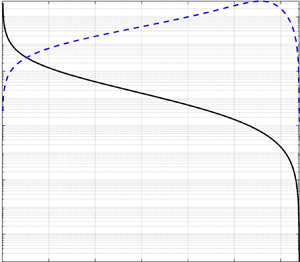Published online by Cambridge University Press: 04 September 2020

Due to triboelectric charging, the solid phase in gas–particle flows can become electrically charged, inducing an electrical interaction among all the particles in the system. Because this force decays rapidly, many of the current models neglect the contribution of this electrostatic interaction. In this work, an Eulerian particle model for gas–particle flow is proposed in order to take into consideration the electrostatic interaction among the particles. The kinetic theory of granular flows is used to derive the transport equation for the mean particle electric charge. The collision integrals are closed without presuming the form of the electric part for the particle probability density function. A linear model for the mean electric charge conditioned by the instantaneous particle velocity is proposed to account for the charge–velocity correlation. First, a transport equation is written for the charge–velocity correlation. Then, a gradient dispersion model is derived from this equation by using some simplifying hypotheses. The model is tested in a three-dimensional periodic box. The results show that the dispersion phenomenon has two contributions: a kinetic contribution due to the electric charge transport by the random motion of particles and a collisional contribution due to the electric charge transfer during particle–particle collisions. Another phenomenon that contributes to the mean electric charge transport is a triboelectrical current density due to the tribocharging effect by particle–particle collisions in the presence of a global electric field. The corresponding electric charge flux is written as equal to the product of the electric field by a triboconductivity coefficient.